How to Care for Turtles
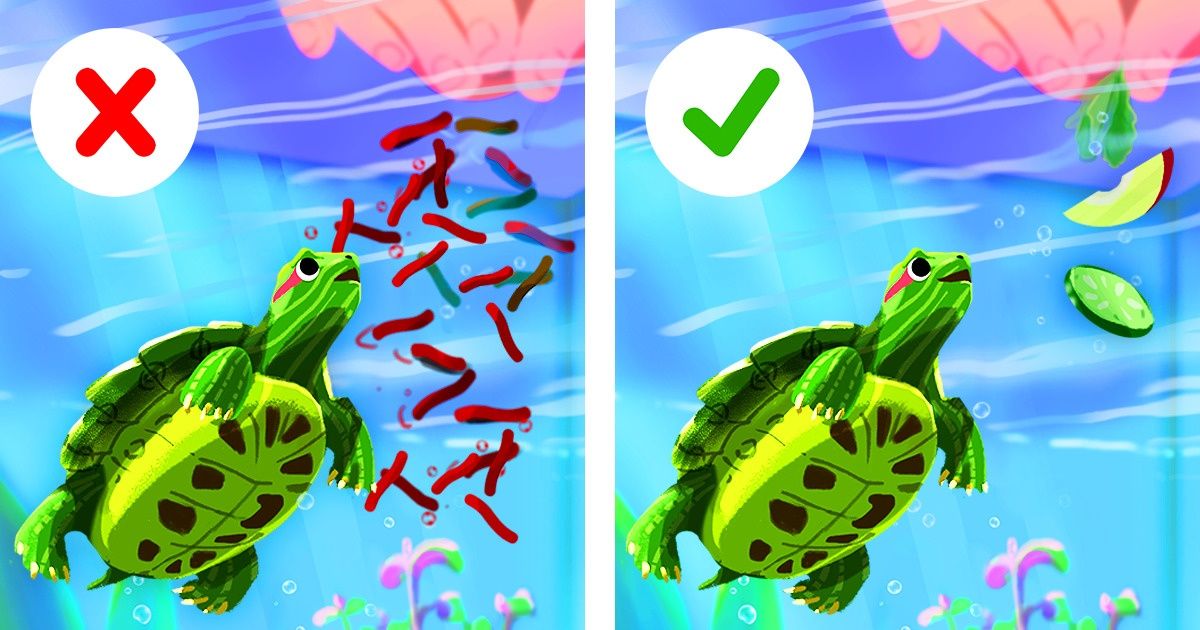
Turtles require special care, and while they don’t like being handled or cuddled, they’re a very cute and fun pet to look after. To make the lives of turtle owners easier, 5-Minute Crafts has collected a few things that you can do to make your turtle’s life better.
Turtle vs tortoise

Before preparing everything for your turtle, it’s important to note the differences between turtles and tortoises so that you know you have the right pet.
- Turtles have a thinner shell and tortoises have more rounded shells.
- Turtles spend most of their time in water and tortoises, on land.
- Turtles have flipper-like legs while tortoises tend to be heavier with club-like forelegs and “elephantine” hind legs.
Note: This article deals with turtles and not tortoises.
1. Set up the tank correctly.
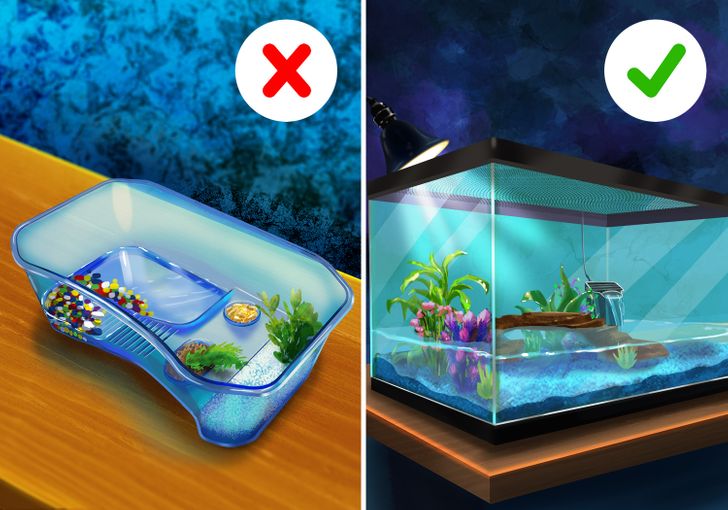
You need a tank that can hold at least 40 gallons in volume with a screened lid so that the turtle can’t escape. Place a turtle dock inside the tank so the creatures have a place to rest underwater. Line the aquarium with slate, rocks, or gravel.
2. Set the temperature.
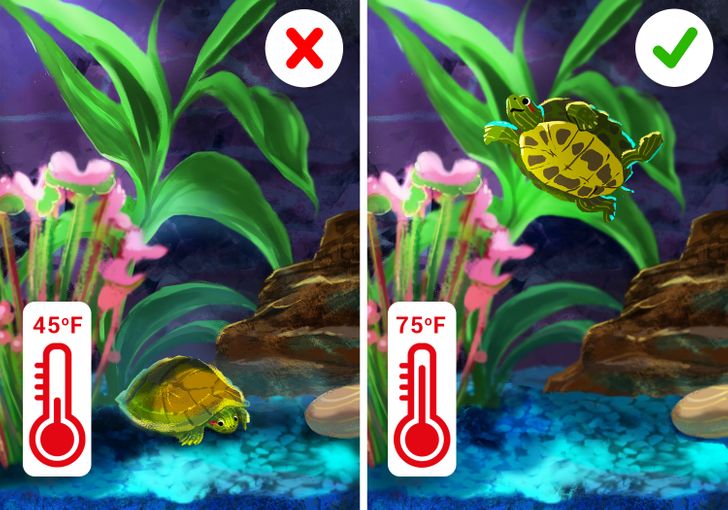
Turtles like to live in aquariums where the temperature is somewhere between 60ºF and 90ºF. Anything lower than 50ºF may cause a turtle to go into hibernation or even get sick. Make sure to have heated water to prevent this.
3. Set up the right lighting.
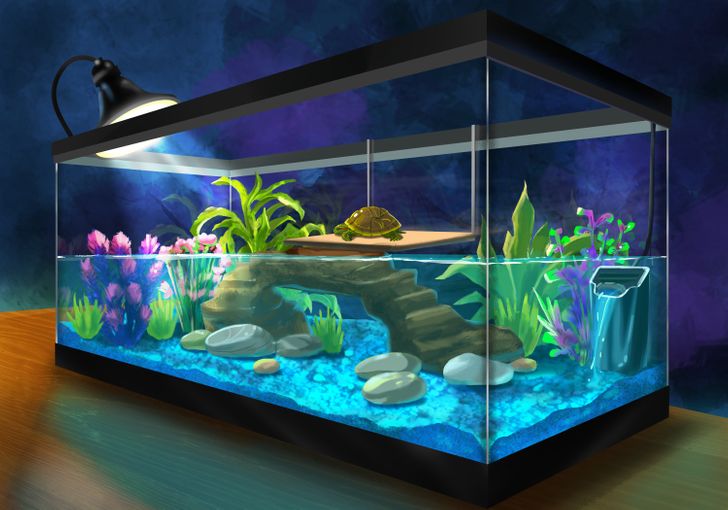
Your tank will need incandescent lighting for the basking area, as a turtle requires 10 to 12 hours of UVB rays with full-spectrum lighting. Place it within 12 inches to 18 inches of the turtle’s basking area.
4. Control the level of water.
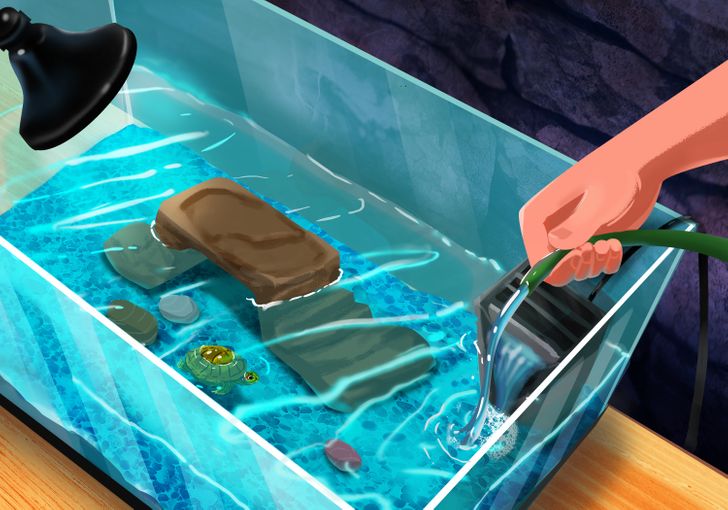
The water level is also very important for the turtle. When your turtle is still a baby, make sure the water isn’t too deep as it learns how to swim. The water volume should fill at least half of the tank.
5. Feed them correctly with the right amount of food.
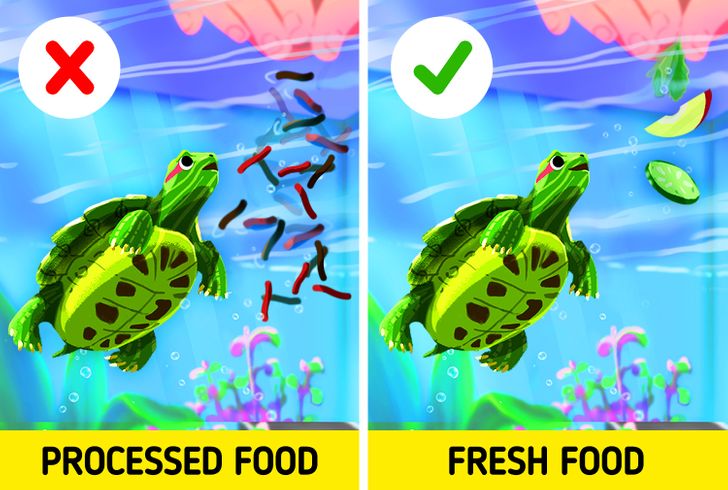
Turtles should have a varied diet, combining live food, pelleted food, frozen food, and fresh fruits and veggies. Never feed your turtles processed food, as it contains large amounts of salt and preservatives. Young turtles can be fed daily and adults should be fed 2 to 3 times per week. Don’t do it every day or in big quantities — you should feed them pieces around the same size as the turtle’s head.
6. Filter and change the water frequently.
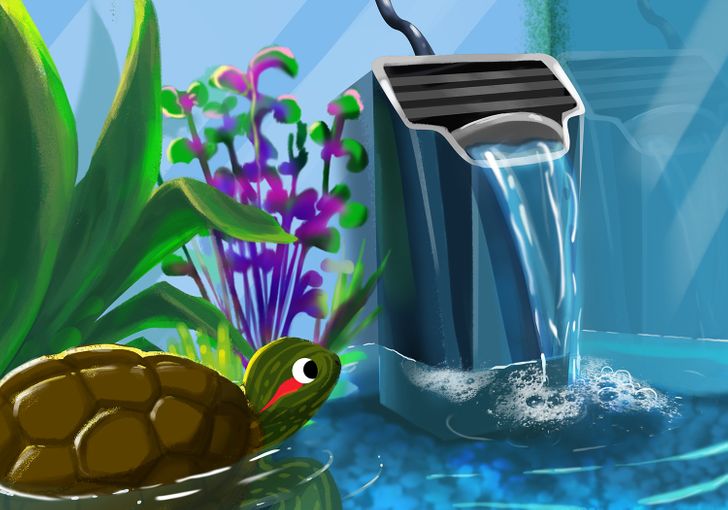
A turtle’s water must be as clean as possible, requiring you to change it a few times a week. Try to invest in a good filtration system and change the water regularly. This will free the water from particles that can lead to infection.